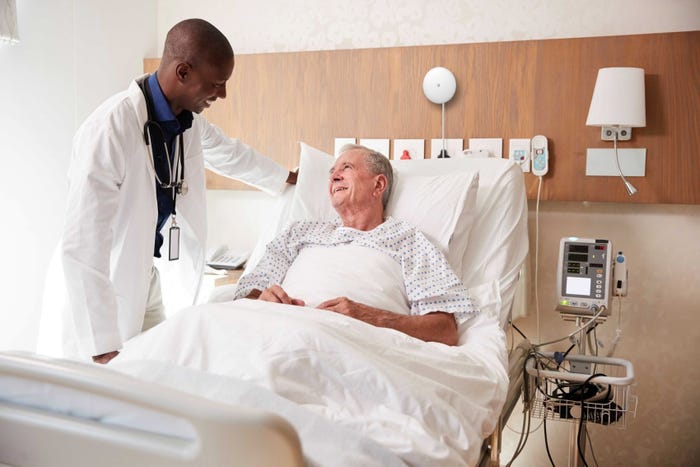5 Contactless Health Monitoring Platforms That Collect Data Noninvasively
Contactless technology is a form of remote health monitoring that uses AI to analyze vital signs, facial expressions, facial blood flow, or vocal behavior to detect medical issues faster than a more invasive physical exam.

When the COVID-19 pandemic hit, patients increasingly turned to telehealth sessions to seek care. And while they may not always be able to evaluate a patient in person, physicians used remote patient monitoring to evaluate patients remotely.
Meanwhile, a category of RPM called contactless health monitoring has emerged that is less invasive and many use artificial intelligence to monitor vital signs. AI allows physicians to analyze patient data and set parameters for early detection or intervention, according to Shahid Shah, a digital health/life sciences entrepreneur and publisher of Medigy Innovation Network, a crowdsourced peer community of clinicians, patients, developers, and healthcare vendors.
“Since contactless physiologic monitoring produces streaming data with pretty high fidelity, AI algorithms tend to work well given the structured nature of data,” Shah tells InformationWeek via email.
Machine learning can be effective in RPM, and generative AI assists in developing reports that are both patient- and provider-facing, he adds.
When considering contactless patient monitoring solutions, IT leaders should pilot a single contactless patient monitoring solution to see if it is a fit for a health system’s operations, Shah advises.
In addition, Shah says providers should stay current on government regulations that impact RPM platforms as healthcare standards evolve. For example, in October 2023 the FDA released its “Enforcement Policy for Non-Invasive Remote Monitoring Devices Used to Support Patient Monitoring” to provide guidance on the use of wireless patient monitoring devices amid the COVID-19 pandemic. The FDA expressed flexibility to allow for noninvasive devices that reduce the exposure of providers and patients to COVID.
Going forward, expect to see more AI solutions integrated with contactless health monitoring solutions, Shah predicts.
“AI enables accurate analysis of complex healthcare data from wearable devices and IoT sensors, facilitating early detection of health issues and personalized interventions,” Shah says. “Healthcare organizations recognize AI's potential to improve patient outcomes, enhance operational efficiency, and reduce costs, further accelerating its adoption in contactless monitoring solutions.”
Contactless health monitoring devices will appear as part of their everyday routines, notes Dr. Keith Thompson, chief medical officer at NuraLogix.
“We can expect the technologies to be built into an increasing amount of every device, paving the way to a world where health vitals are continually monitored with just a look at a smartphone, bathroom mirror, TV screen, or kiosk,” Thompson tells InformationWeek via email.
Thompson predicts that contactless health monitoring will appear in the insurance industry to help with underwriting, as part of corporate employee assistance programs (EAPs) to integrate into health apps, and as part of telehealth sessions.
Check out the following slide show to learn more about how some innovative contactless health monitoring platforms work.
About the Author(s)
You May Also Like







